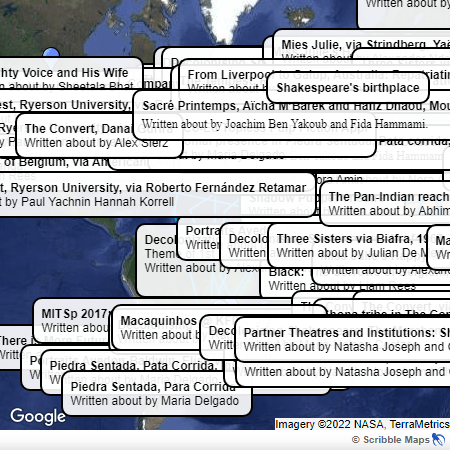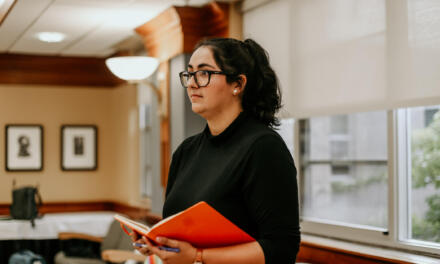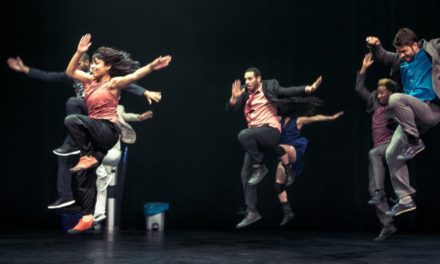Over the years, our contributors have been addressing the topic of decolonization in theatre and performance from all four corners of the world. This interactive map aims to give our readers an overview of what and where they’ve been reporting on, trends and patterns, as well as areas we haven’t yet covered.
The map brings together most articles that contain the word “decolonization” and/or come under the new rubric “Theatre and Decolonization” on the Theatre Times homepage. In the end, about thirty-five contributions have been mapped, and this is surely inexhaustive.
The Process
It must not be forgotten that the history of mapping itself is an imperialist one. Seas and oceans have been charted to aid European “discovery”—aka invasion—of faraway lands. Borders have been drawn up by the perpetrators of plunder and carved out in the blood and tears of the conquered. For example, we need only look at the 1884 Berlin Conference, when the European nations, Russia, and Turkey divided up the African continent into fifty countries, paying no heed to the locations and movements of indigenous cultures. To avoid repeating an imperialist hunger for naming borders, I opted for a “satellite” view that would not show borders or country names.
Because the history of colonization entailed the movement of people and goods between European imperial powers and lands they had usurped, decolonization is bound up in reverse and counter-hegemonic journeys that undo or subvert this memory of conquest. I choose the platform “Scribble maps” because it was a free online tool that, unlike Google maps, enables users to chart trajectories via the creation of lines, squiggles, circles, hexagons, and other shapes. For each of the thirty-five articles analyzed, I drew up a list of the places mentioned by our contributors either explicitly or implicitly: the location of theatres and festivals where “decolonizing” performances happen, the homelands of fictive characters, the journeys of performers and theatre-makers, the birthplace or famed regions of playwrights.
My attempt to map decolonization at The Theatre Times has a priori limits set by my white identity. I do not claim my work as the equivalent of those on the receiving end of the empire mapping their performance cultures for themselves. Indeed, in trying to map the journeys recounted by our contributors, I hit a wall of self-ignorance and cartographical enigmas, and I repeatedly committed errors. I think this may be considered a sister concept to what artist and writer Adjoa Armah, drawing on Katherine McKittrick, calls the “Black ungeographic”.
Taking issue with cartography’s origins in the history of colonization, Armah describes the “Black ungeographic” as a kind of unmapping or anti-mapping, an “un-disciplining, bringing disparate worlds into correspondence, negating dominant protocols, casting placemaking as a set of ideas and not a strictly knowable geography”.[1] As I discovered the difficulties of mapping regions and people outside of my Eurocentric worldview, I found myself facing my own “white ungeographic,” at a loss to know how to delimit the areas outside of what was “strictly knowable” for me.
It was much easier to map allusions to the Western world, even when they were loosely evoked than it was those locations that take decolonized distance from imperial centers. The former have specific place names that are fully searchable via Google maps, the Encyclopedia Britannica, Wikipedia, and so on. I found myself making quick choices about marking the origins of Shakespeare (Stratford-upon-Avon), “Enlightenment values” (Edinburgh, Paris), or the “shavings of Spanish” that connote “‘civilization’” (Seville, the former powerhouse of the Spanish empire during the country’s Golden Age) in Piedra Sentada, Pata Corrida.
By contrast, I was “ungeographied”—to extend Armah’s and McKittrick’s term to verbal usage—by references to the “Arab region” in shadow theatre, a “lost Shona culture” in Danai Gurira’s The Convert, the “pan-Indian reach and resonance” of Sheetala Bhat’s Performing Self, Performing Gender: Reading the Lives of Women Performers in Colonial India, and the “ancestral land of the Dharug people” in The Secret River. These references connote historically shifting borders or deny the very impossibility of demarcation because they bespeak nomadic existences; they have not been fully “mapped”—or, better put, not been deemed “mappable”—by Western geographers. I opted to create circles as a solution. These should not be considered strictly accurate but rather a geometrical recognition of my own approximate knowledge.
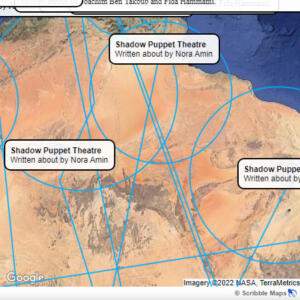
© Lara Cox and Scribble Maps
Similarly, it soon became apparent that a dense mass of lines emanating from or “returning” to Europe (in particular Brussels, London, Stratford, Paris) would make my work “ungeographic”. The transformation of the continent into a hive of lines aptly signals the risks of discussing “decolonization” in the theatre: Europe lays the ground for a canonical theatrical metonymy—Shakespeare, Strindberg, Thebes—which decolonized performance cultures frequently take on (to subvert). This means that the continent inevitably hosts a series of “hubs” where several productions converge.
The proliferation of callout bubbles in Europe soon blocked my line of sight, hindering my ability to plot trajectories. Scribble maps enable users to move already-established lines very easily, which meant that as I lost myself in the labels, I would inevitably end up displacing these previous trajectories by accident. Rather than returning to “correct” these lines in what would have been a Sisyphean enterprise (since the more I added, the more the problem kept reproducing itself), I decided to keep these cartographical errors as another remnant of “ungeograph-ying” whiteness, as a kind of symbolic displacement of the well-known theatrical locations in Western Europe by theatre productions that decolonize “the old continent” from the outside. Sometimes, lines do not reach or exceed well-established locations, performing a rupture between the colonizers and the formerly colonized or the neo-colonized. Indeed, Europe, more than any other (Africa is a close rival) finds itself splintered and disaggregated by the lines, small but visually satisfying retribution for the European nations’ carving up of lands it didn’t know and had no right to know in past centuries.
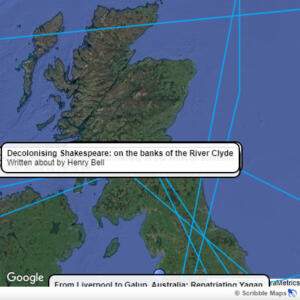 Cartographical errors produced by the mass of lines converging on Europe. ©Lara Cox and Scribble Maps. |
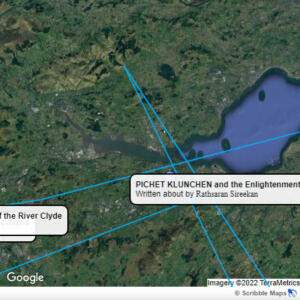 Cartographical errors produced by the mass of lines converging on Europe. ©Lara Cox and Scribble Maps. |
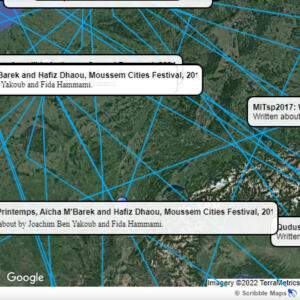 The scrambling of Europe. ©Lara Cox and Scribble maps. |
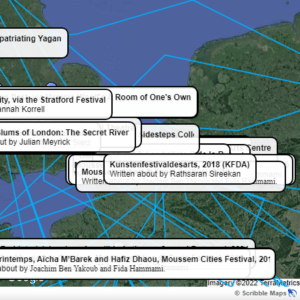 The scrambling of Europe. ©Lara Cox and Scribble maps. |
These lines are therefore purposively confusing; they perform a rhizomatic de-centering and will probably frustrate any users’ search for “origins”. However, users of the map will find the same or complementary labels for the same productions in different parts of the world as discussed by our contributors. Clicking on the labels will take users to the relevant Theatre Times article.
So what?
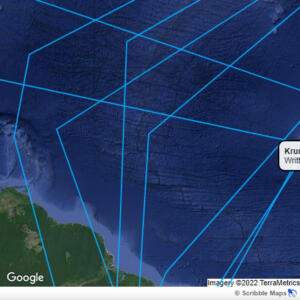
The Atlantic Ocean. © Lara Cox and Scribble Maps.
This map gives insight into the way contributors are currently talking about theatre and decolonization, and provides a visually immediate guide about absences and lacunae.
As I read through the articles, I discovered recurring themes: decolonizing Shakespeare was popular and extends across the globe from Canada to Ghana, South Africa, and India. Belgium was also a (perhaps surprising) node for the decolonization of theatre, with contributors discussing the Kunstenfestivaldesarts, the country’s links with MITsp 2017 (São Paolo), the Moussem Cities @ Tunis Festival, 2016, and individual performers and performances like Pichet Klunchun and All Cops Are Bastards that have passed through the region.
The lines that chart the journeys taken by these performances do not reflect real voyages but seek to capture space that has been traveled across as consequential and meaningful. This is particularly the case for the sea, what Armah describes as an underestimated “nowhere” in Western cartography. Bodies of water contain untold stories where transformations happen. In the interactive map, we can see that the Atlantic Ocean, covered in blue fissures, links South and North America to Europe and Africa. Paul Gilroy’s notion of the Black Atlantic may be brought to mind when viewing this blue-veined oceanic region. Our contributors seem to confirm, collectively, Gilroy’s argument of countercultures that spring from the transoceanic passage.[2] Though the Atlantic was a vessel for imperial conquest and the slave trade, from it there have emerged culturally hybrid, syncretic performance cultures that play a role in decolonization.
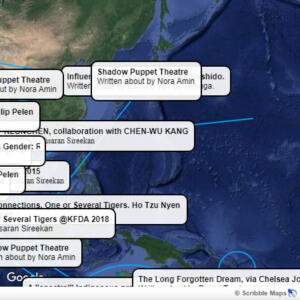
The interface splits the Pacific in two, making it difficult to map transpacific journeys. © Lara Cox and Scribble Maps.
The map also makes starkly evident those areas that have not yet been covered by our website, the lands that remain bare and green, or sparsely labeled: China, Russia, Eastern Europe, and parts of Central Asia. While the Atlantic is littered with lines, it was difficult to envisage charting the Pacific in the same way. I managed with two references: the first to Thai performer Pichet Klunchen who at one moment was based at UCLA and who joined forces with Taiwanese performance artist Chen-Wu Kang. The transpacific bridge is more of an imagined trajectory than anything else since the two collaborated at the Kaai Theatre in Belgium. The second reference was to the reimagining of Canadian dramaturgy through the documentary about Māori filmmaker Merata Mita.
Because of the Eurocentric format of the Scribble maps interface, the Pacific is anyway obstinately recalcitrant when it comes to plotting a continuous line of navigation between the Americas and Australasia. The vast ocean is a nether region split awkwardly in two by the platform. Perhaps the pristine status of the veinless Pacific stirs ecological satisfaction. However, it also promisingly suggests an “unconquerable” space, which lets the imagination run in exciting directions at the thought of what has not yet been reported on, of, for instance, Hawaiian decolonization of US culture, or of Tahitian subversions of metropolitan France.
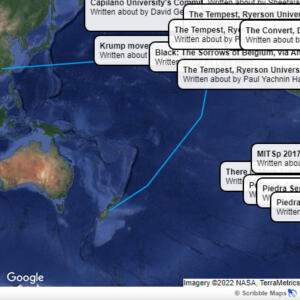
The interface splits the Pacific in two, making it difficult to map transpacific journeys. © Lara Cox and Scribble Maps.
Ultimately, the juxtaposition of over-labeled land and sea, with zones that remain unmarked on this map—naked “nowheres” (Armah)—may be indicative of what is currently understood by the term “decolonization” when applied to the theatre. For the moment, it seems to connote a battleground between Europe and Africa, Europe the Americas, and Europe and Southeast Australasia. The next step might be to consider whether “decolonization” is the right word for the contestatory performance cultures flourishing outside of this European “center.”
To access the map, click here.
[1] Adjoa Armah, “In our language, the word for the sea means ‘the spirit that returns’. Afterall. 8 September 2020. https://www.afterall.org/article/in-our-language-the-word-for-the-sea-means-the-spirit-that-returns#footnote-source-4[accessed 20 May 2022].
[2] Paul Gilroy, The Black Atlantic: Modernity and Double Consciousness (Harvard UP, 1993).
This post was written by the author in their personal capacity.The opinions expressed in this article are the author’s own and do not reflect the view of The Theatre Times, their staff or collaborators.
This post was written by Lara Cox.
The views expressed here belong to the author and do not necessarily reflect our views and opinions.

